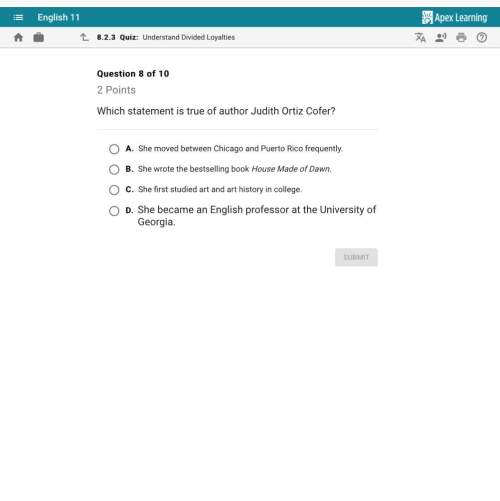
English, 11.02.2021 08:20 s0cial0bessi0n
Write a “critique” essay on either Hugh Gusterson’s “An Anthology of Rumor”
In Module 1, you practiced summarizing, paraphrasing and using quotation. Those three skills allow you to report the ideas of others concisely and responsibly. In Module 2, in critiquing a source, you evaluate the validity of an author’s ideas and the overall persuasiveness of the author’s argument. Use your summarizing, paraphrasing, and quoting skills to integrate the central ideas found in your source text, and clearly express your reasons for responding as you do to the author's argument. To write an effective critique, consider following the guidelines found on pages 81-83 in the textbook Writing and Reading Across the Curriculum. A model critique essay can be found on pages 83-86 in the textbook.
How to Structure Your Essay
In your Introduction,
Identify the text you’re critiquing, its author and the central issue it addresses. State your evaluation of the article, and announce the various points you will be addressing in the rest of the essay. This type of introduction will tell the reader what article you’re discussing (the topic), what your critique of the article is (your thesis), and what aspects of the article you will discuss to support that critique.
In your body paragraphs,
The body of your critique should consist of a summary component, an assessment component and a response component.
1. Summarize the author’s main point. What is the author’s thesis? What is the author’s purpose (to inform, argue or both)? What are the main ideas that support the author’s thesis?
2. Assess the validity of the author’s presentation, distinct from your points of agreement or disagreement. Comment on the author’s success in achieving his or her purpose by reviewing three or four specific points. To evaluate the text, consider both the author’ ideas (you may read from your own critical thinking, personal experience, and values) and the author’s rhetorical choices concerning audience, purpose, and style. You might want to consider some of the questions below; but don’t consider all of these in your paper.
§ What is the author’s purpose and what does this purpose tell you about his values?
§ Who is the author’s intended audience?
§ What is most persuasive about the text? Does the author leave out some issues?
§ How does the author try to influence his audience?
§ What kind of examples does the author use? What kind of language, tone or attitude does the author choose? How can I question this writer’s data, evidence, and supporting arguments?
3. Respond to the author’s views. Which view do you agree? Which do you disagree? Discuss your reasons for agreement and disagreement.
In your conclusion,
Consider that you promised your readers something in your essay’s introduction. Did you accomplish the task? Indicate to your reader that your essay has accomplished what it set out to do by stating your overall reaction to the validity of the article based on the rhetorical features you considered. Use this opportunity to leave your reader with a lasting thought about the significance of your observations.
Citation Style
Use MLA style to attribute information and expression of ideas to your source. Every time you quote or paraphrase from the sources provide the corresponding parenthetical citation. In a separate “Works Cited” page, provide the full bibliographic entry for the text you critiqued.

Answers: 1
Another question on English

English, 22.06.2019 04:30
Identify an example of an epic simile in book 13, book 21, or book 24 of the odyssey and explain how it is different from a typical simile.
Answers: 3

English, 22.06.2019 12:00
"and descant on mine own deformity: " what does the word descant mean in this shakespeare play richard iii, act i, scene i?
Answers: 3

English, 22.06.2019 18:00
Organic architecture focused on letting each building grow naturally from its environment. what was the basic principle of frank lloyd wright's organic architecture? a.) form follows functionb.) form and function are onec.) function follows form
Answers: 1

English, 23.06.2019 01:00
Perhaps i have once again been too optimistic. is organized religion too inextricably bound to the status quo to save our nation and the world? perhaps i must turn my faith to the inner spiritual church, the church within the church, as the true ecclesia and the hope of the world. what can we infer about king's beliefs from this excerpt from "letter from birmingham jail"? select all that apply. he believed that people should be guided by their conscience. he believed that the clergy had no place in discussing social issues. he believed that people should form new churches to replace the old ones. he believed that the clergy had been largely unsupportive of the movement.
Answers: 1
You know the right answer?
Write a “critique” essay on either Hugh Gusterson’s “An Anthology of Rumor”
In Module 1, you practi...
Questions





Geography, 14.12.2021 21:00

Mathematics, 14.12.2021 21:00


Mathematics, 14.12.2021 21:00

Mathematics, 14.12.2021 21:00



Mathematics, 14.12.2021 21:00




Mathematics, 14.12.2021 21:00



Mathematics, 14.12.2021 21:00

Chemistry, 14.12.2021 21:00




